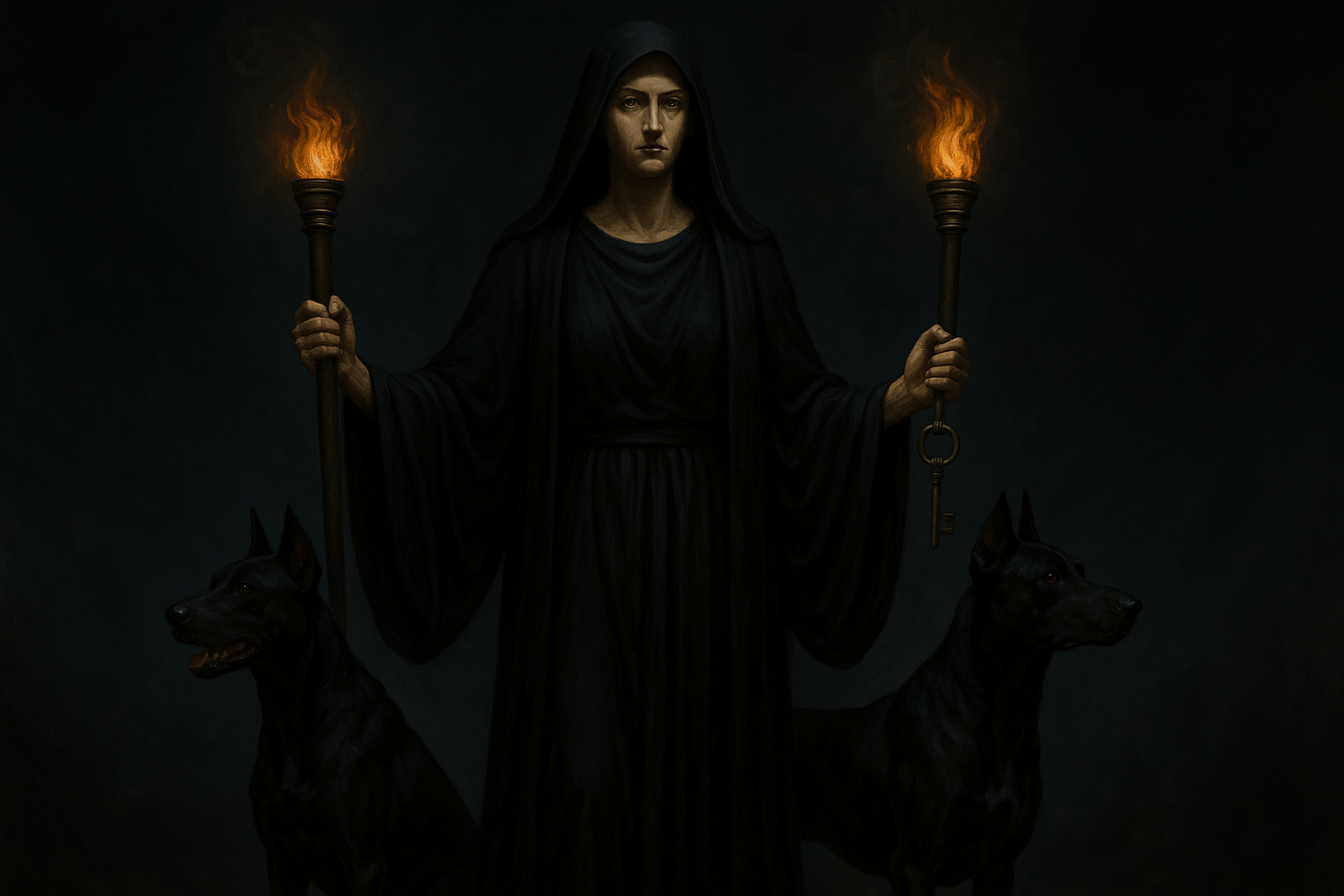The History of Hekate: Worship, Practice, and Integration of Paths

Introduction to Hekate
Hekate, a prominent deity in ancient Greek mythology, is best known as a goddess of magic, witchcraft, the night, and the moon. Her origins can be traced back to the pre-Hellenic period, with her worship being most notably linked to the Greek city of Caria. Evolving from an earth goddess in her earlier forms, Hekate later came to embody a multifaceted deity who presided over various domains, including the mystical realm of the dead and the liminal spaces between the living and the dead.
Historical Context
In ancient Greece, Hekate was revered for her powers related to magic and mystery. Early representations of Hekate in art and literature show her as a woman holding torches and keys, symbolizing her role as a guide through darkness and the unknown. She became particularly associated with the witchcraft practices in the classical period, leading to her portrayal as a protective figure for women and children.
The writings of Hesiod and Homer further solidified her status, with Hesiod famously referring to her in Theogony, where she is granted power over the earth, sea, and sky, making her one of the most powerful deities in the Greek pantheon. Over time, her worship spread, and she became integrated into various local cults, notably alongside deities such as Demeter and Persephone, particularly in the context of the Eleusinian Mysteries, which focused on themes of death and rebirth.
Worship and Practices
Hekate was predominantly worshiped through rituals and ceremonies that afforded her respect and veneration. Offerings to her often included candles, food, and symbolic objects placed at crossroads, locations where she was believed to protect and guide those who were lost or in need of direction. Hekate's festivals, such as Hekate's Night on the full moon, were occasions for communal rejoicing, seeking her blessings for protection, divination, and introspection.
Additionally, the practices associated with Hekate often included the use of incense, herbal offerings, and rites that connected her followers with the spirit world. This deep connection to the spiritual realm also laid a philosophical groundwork for later interpretations of necromancy, highlighting her association with spirits and the dead.
Understanding Necromancy
Necromancy, traditionally defined as the practice of communicating with the deceased or invoking their spirits, is deeply intertwined with the worship of deities like Hekate. It includes a range of practices for divination and guidance from the deceased, often used in situations of grief or uncertainty. In historical texts, practitioners of necromancy would seek Hekate's intervention to facilitate these communications, demonstrating that her worship extended beyond mere magical practices to provide solace and wisdom.
Societal taboos and moral complexities accompanied the practice of necromancy in the ancient world. It was often seen as a way to challenge the boundaries between life and death, revealing deep cultural insights regarding mortality, existence, and the unknown. This highlighted the profound duality of Hekate's nature—her role as both a nurturer and a guide within the often-feared realm of death.
The Left-Hand Path: Facing Shadows
In contemporary spirituality, the Left-Hand Path is understood as an approach that embraces the self as a divine source of power and wisdom. For those who practice it, it is often characterized by confronting one's own "shadows"—the hidden aspects of one's personality that are typically repressed or ignored. By drawing on Hekate's wisdom, practitioners can harness the challenges posed by personal hate and fear to foster growth and transformation.
In embracing both the Left-Hand and Right-Hand Paths, one can learn to combine the raw, transformative energies of their shadow self with the structures and ethics often emphasized in more traditional practices. By recognizing the valuable lessons hidden within darker aspects of existence, individuals can cultivate a fuller understanding of their spiritual journey and nurture an integrative approach to their beliefs.
Integration of Paths: Building a Holistic Practice
Drawing upon both the Left-Hand and Right-Hand Paths encourages a more nuanced spiritual practice. The synthesis of these perspectives facilitates a more holistic understanding of concepts such as the Tree of Life and the Tree of Knowledge. In engaging with figures like Beelzebub, practitioners can explore the dichotomies inherent within spiritual belief systems, allowing for a deeper examination of self that incorporates light and dark, empowerment and humility.
This integration supports the development of ideas and practices that transcend binary understandings of good and evil. By creating new ritual formats and methodologies, individuals can infuse their practice with fresh vitality, blending lessons from both paths into actionable insights. This approach values the wisdom found within individual experiences and seeks to harmonize spiritual teachings with personal reality.
Mission Objective for Luminous Shadow Witch
At LuminousShadowWitch.com, the mission is to cultivate a unique space for individuals seeking a deeper understanding of Hekate, necromancy, and the interplay of spiritual paths. By providing resources that combine historical scholarship with personal interpretation, the site aims to empower practitioners to shape their own spiritual journeys.
This mission extends towards fostering a community that values diversity of understanding and honors the various personal paths individuals take. By embracing respectful, open dialogue, Luminous Shadow Witch seeks to bridge gaps between traditions, encouraging both academic inquiry and personal exploration of spiritual truths.
Conclusion
Hekate remains an influential figure in modern spirituality, embodying lessons of duality, transformation, and wisdom. As practitioners explore the realms of necromancy and the complexities of the Left-Hand Path, they can draw upon the rich historical tapestry of Hekate's worship to inform and enrich their practices. By integrating multiple paths, practitioners engage in a dynamic and evolving exploration of the divine that supports personal growth and creative expression.
As we navigate the landscapes of spirituality, let us remember the importance of historical grounding, personal experience, and the dual nature of existence. May the exploration of Hekate and the lessons learned from necromancy illuminate paths for all who seek the mysteries of life and beyond.